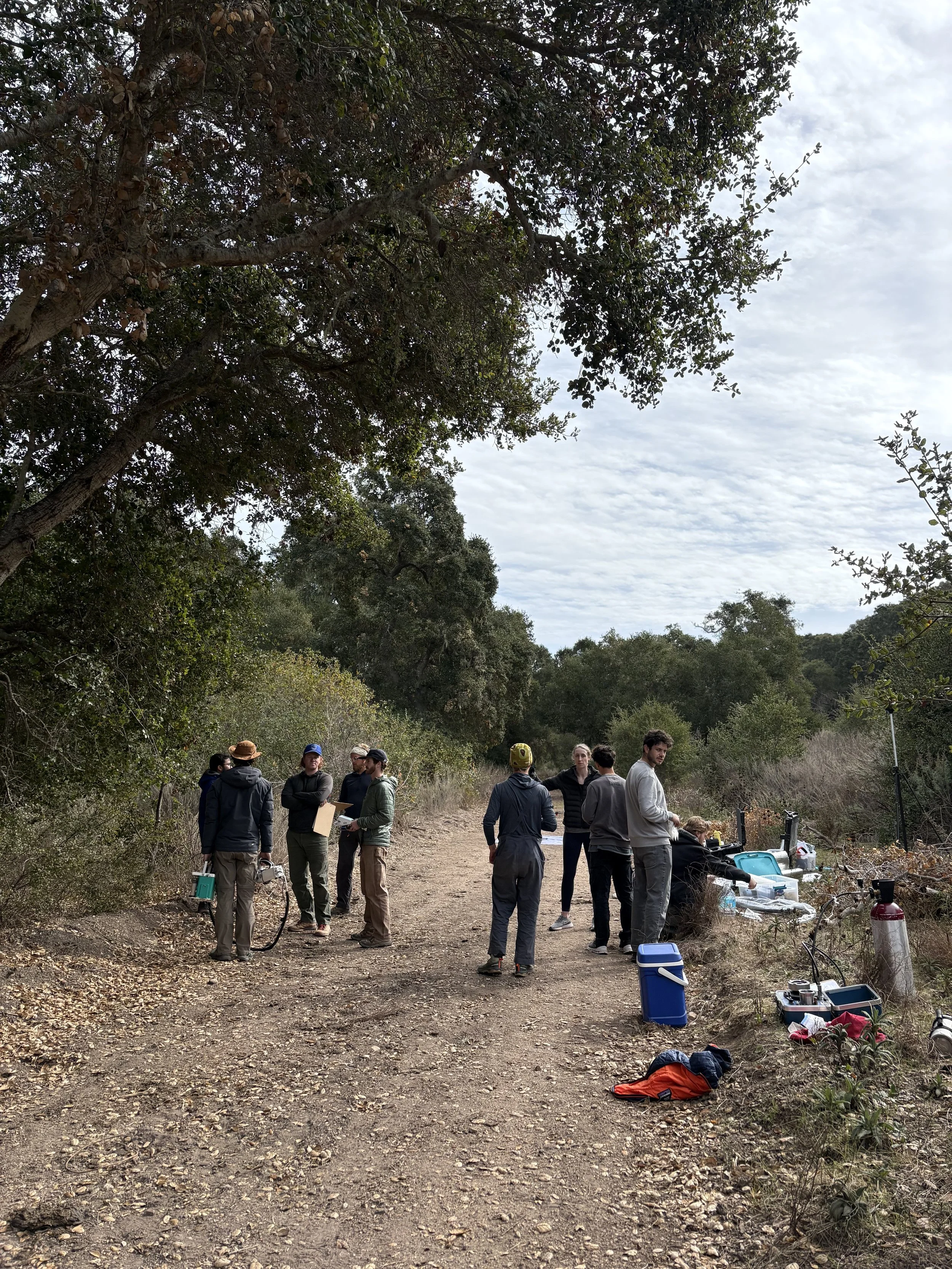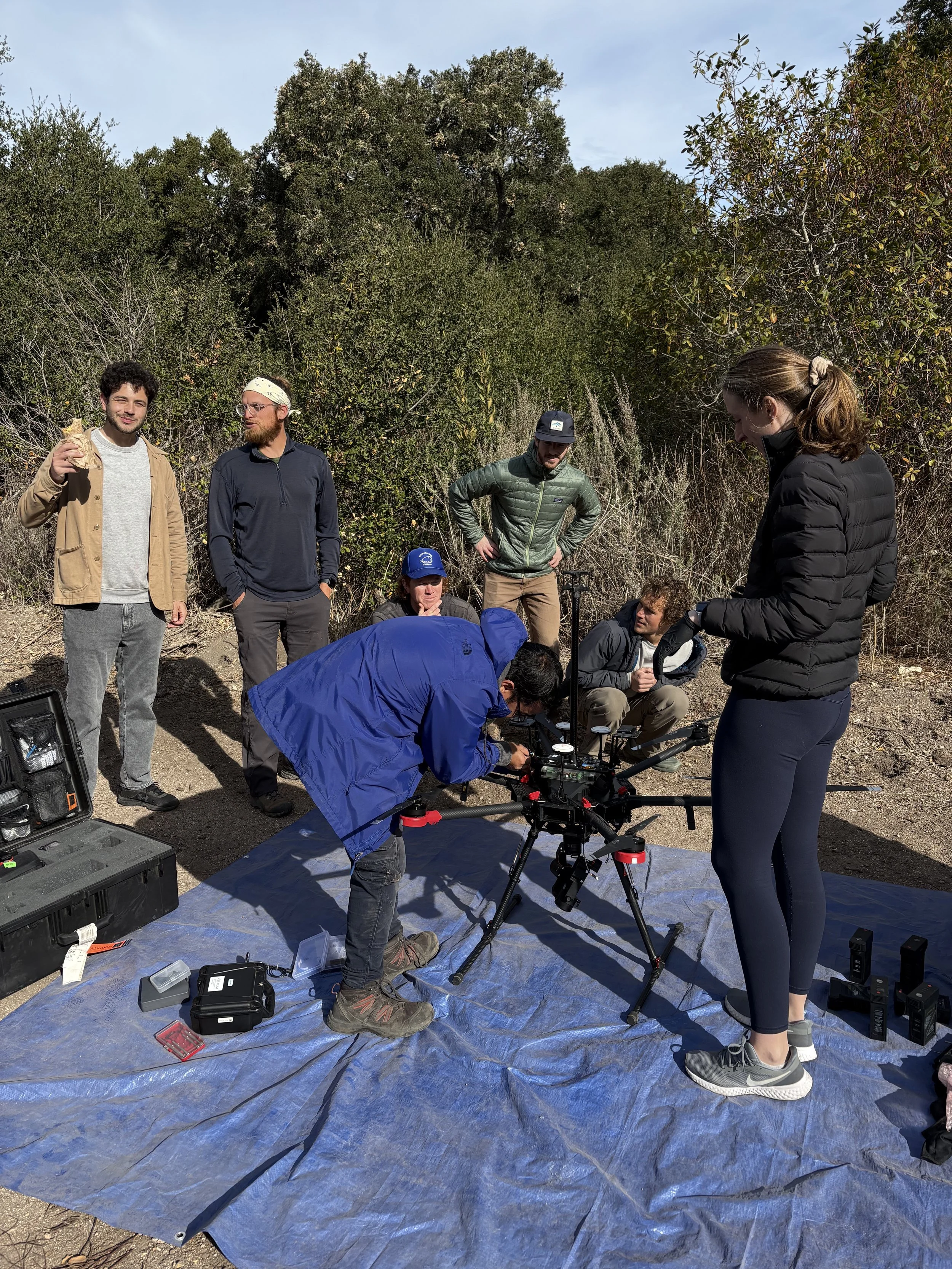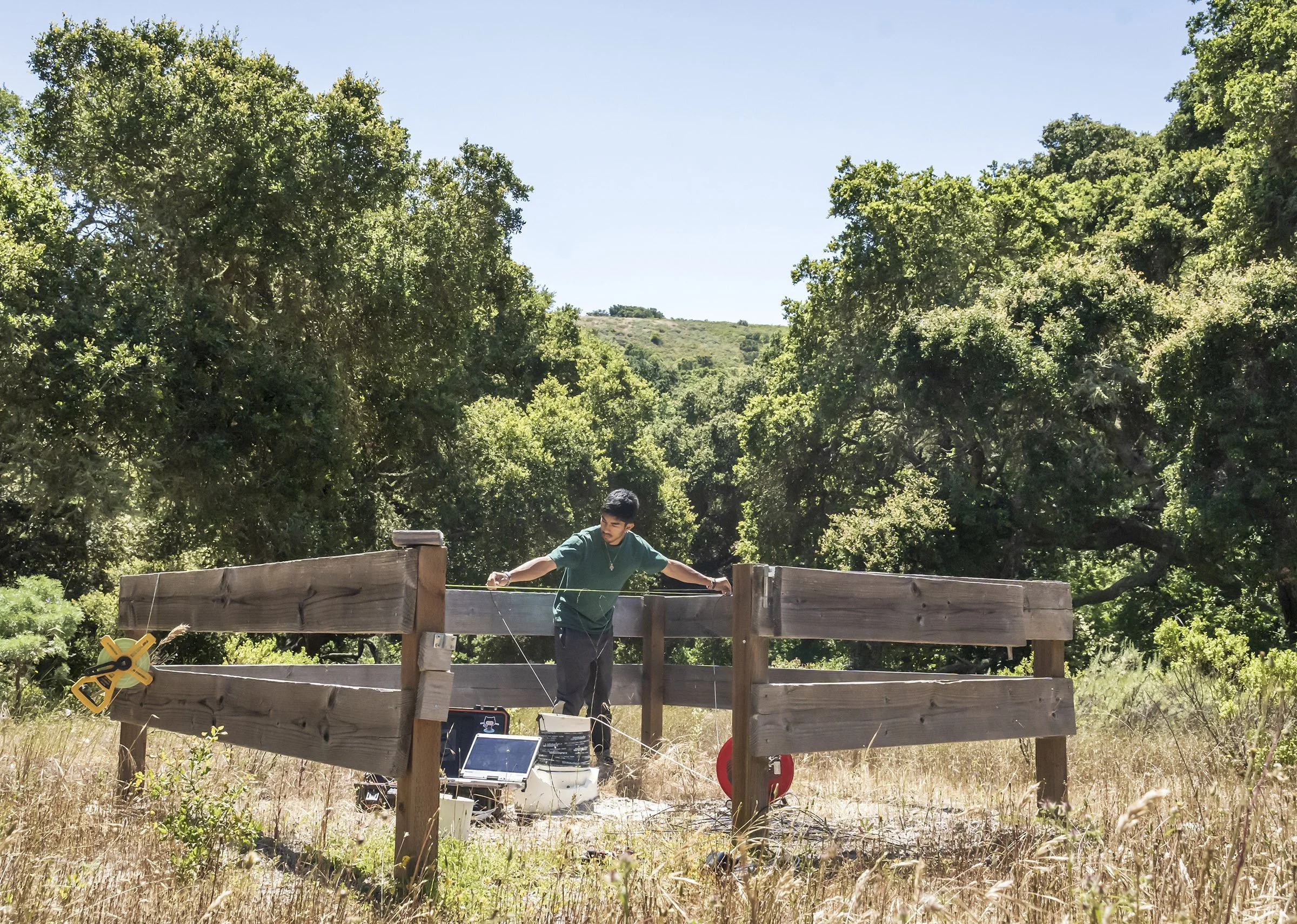
Ecohydrological Resilience at Dangermond Preserve
Monitoring vegetation water stress in a Mediterranean Dryland
Understanding how trees manage water stress in a changing climate
Climate change is fundamentally reshaping water availability in Mediterranean ecosystems, altering both the supply and demand of water for vegetation. Despite the urgency of these changes, critical measures of water use and water stress remain insufficiently understood.
Our research at the Jack and Laura Dangermond Preserve seeks to gain an understanding of dryland ecohydrology and bridge the gap between water use and stress through combining innovative methods for monitoring canopy-scale ecohydrological traits and their role in ecosystem resilience.
What we study
-

Quantifying canopy-scale water use and stress
-

Characterizing plant hydraulic trait variation
-

Developing early warning indicators
How we study it
Our work combines remote sensing with field-deployed instrumentation and modeling. We use:
UAV-based thermal and multispectral imagery
Sap flow sensors and soil moisture profiles
High-resolution meteorological monitoring
Leaf-level measurements of stomatal conductance and gas exchange
Real-time data integration with the JLDP Digital Twin platform
Recent updates
-

Dangermond Preserve: a Vibrant Living Lab




